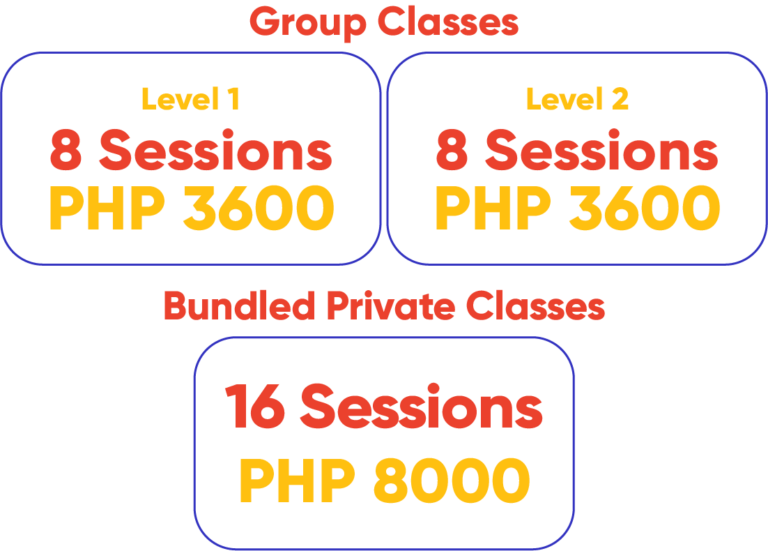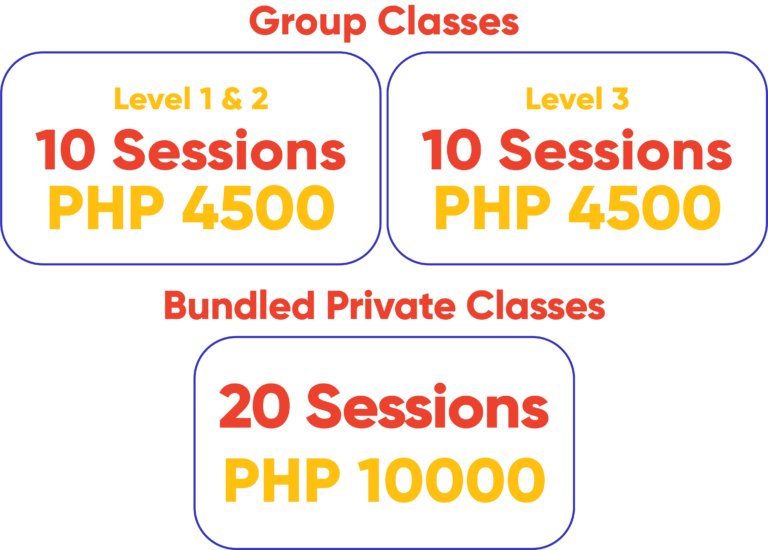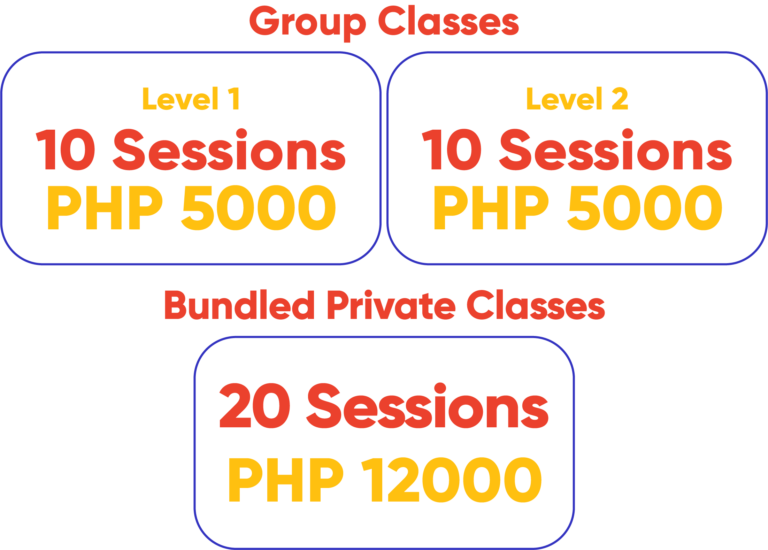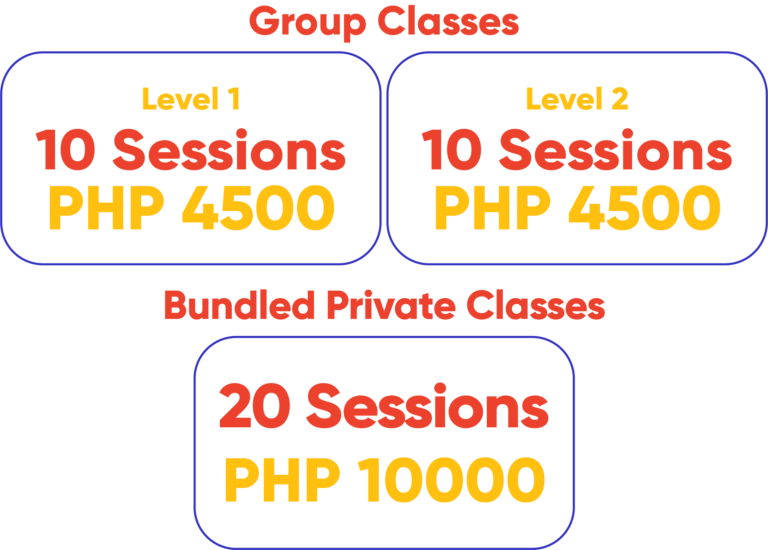OUR COURSES
We offer a range of courses catering to the varying interests and learning needs of kids from all ages.
Take our Quiz!
Can’t decide on what course to take?
Take this quiz and find out what suits you best!


A flexible online approach
suitable for every learner
Our online courses are designed to be a blend of self-paced learning through our online classroom and guided learning through live video sessions with our instructors.
Coding Youngsters
Instructors work with students as they are familiarized with words, sentence constructions, and concepts such as time, addition, subtraction, and sequencing. This course is taught through live video classes only.
Platform: ScratchJr.
Technology:
- iPad (iOS 11 or higher)
- Android (7 inches of larger with Android Nougat 7 or higher)
- Computer or Laptop for live classes
Schedule: New batches every four (4) weeks for weekday classes and every six (6) weeks for weekend classes | 2:00 – 3:00 PM (Weekday) and 10:00 – 12:00 NN (Weekend)
Advisable for Kids
5-7 years old

Basic Coding using symbols in scratchjr
How Computers Work
Introduction to computers and programming
Numbers in Block
Assigning action blocks frequency
Repeating
Looping for efficiency
Sequencing and Events
Arranging code for logical output using multiple events
Final Project
Creating a Crossy Road Game – a simple obstacle game on tablets
animating characters and stories in scratchjr
Art in ScratchJr
Exploring the drawing platform and how to edit character appearance
Talking Characters and Sending Signals
using say block for character speech and sending signals using message events
Sounds in ScratchJr
Adding sound blocks to character actions
Changing Scene
Adding page and scenes to project
Final Project
Creating a Choose Your Own Adventure Story Game
Coding with iPad
Hopscotch introduces computer programming to kids through a visual, block-based programming language on an iPad. Students will go through foundational coding topics and apply this when they complete their final projects – interactive games.
Platform: Hopscotch
Technology:
- iPad (iOS 13 or higher)
- Computer or Laptop for Live Classes
Schedule: New batches every four (4) weeks for weekday classes and every six (6) weeks for weekend classes | 4:00 – 5:00 PM (Weekday) and 10:00 – 12:00 NN (Weekend)
Advisable for Kids
8-14 years old

level 1: basic ipad game creation in hopscotch
Introduction to Hopscotch and Programming
A brief overview of the platform and computer programming
Animations
Movement combinations for Hopscotch characters
Events/ Bumps
Relating actions of characters, and setting up different iPad conditions: tilt, tap, shake
Looping
Use of control flow blocks for efficiency in coding
Shapes
Use of Math concept to instruct characters movement
Supplementary Topic during live session
Making character follow another character (AI)
Final Project
Froggo, a simple obstacle game with iPad
level 2: advanced ipad game creation in hopscotch
Abstraction
Creating custom blocks shared across different characters
Variables
Initializing, incrementing and decrementing values stored in variables
Gravity
In depth implementation of variables and abstraction topics
Supplementary Topic during Live Session: Rock Paper Scissors Game!
Making their own version of Rock, paper, scissors game.
Final Project: Spaceship Racer
Keep your lives and gain score as you battle in space against space rocks!
Block-based Game Making
An introduction to computer programming using the visual, block-based programming language, Scratch. Throughout this course, students learn how to make their own game and their own story through animation.
Platform: scratch.mit.edu
Technology:
- Computer or Laptop with one of the following web browsers:
- Google Chrome 63 or higher
- Microsoft Edge 15 or higher
- Mozilla Firefox 57 or higher
- Safari 11 or higher
Schedule: New batches every four (4) weeks for weekday classes and every six (6) weeks for weekend classes | 3:30 – 4:40 PM (Weekday) and 1:30 – 3:30 PM (Weekend)
Advisable for Kids
8-14 years old

level 1: Basic game making in scratch
Introduction to Scratch and Programming
Brief overview of the platform and what is computer programming
Negative numbers, units, the coordinate system
Moving characters in Scratch
Repeat and Forever
Looping code for efficiency
Events
Exploring different options to move characters and influence actions
Conditionals:
If-then relationships in coding
Final project: Raining Objects Game
level 2: advance game making in scratch
Variables
Initializing, incrementing and decrementing values stored in variables
Scores
Creating scores for games
Abstraction
Creating custom blocks shared across different characters
Broadcasts
Making characters communicate with each other by broadcasting and receiving signals
Supplementary Lesson
Lists: creating topscorers for games
Final Project: Asteroid Shooter game
level 3: story telling and animation in scratch
Character Animation
Switch Costume, Monologue-Dialogue
Moving Between Scenes
Layering Background/Setting, Backdrop Changes
Animation Features
Effects, Narration
Animation Features Part 2
Text to speech, video sensing, custom blocks
Final Project: Scratch Story
Web Development Foundations
In this course, students get an introduction to HTML (Hypertext Markup Language) and CSS (Cascading Style Sheets), two of the core technologies in Web Development Foundations. They are the basis for building websites and web applications.
Platform: Windows 32 bit or 64 bit / MacOs OS X (10.7 or later) / Linux 64 bit or 32 bit
Technology:
- Computer or Laptop with one of the following browsers:
- Google Chrome 63 or higher
- Microsoft Edge 15 or higher
- Mozilla Firefox 57 or higher
- Safari 11 or higher
- Microsoft Edge
Schedule: New batches every four (4) weeks for weekday classes and every six (6) weeks for weekend classes | 2:00 – 3:00 PM (Weekday) and 3:00 – 5:00 PM (Weekend)
Advisable for Kids
10 and above

level 1: Web design with html/css
Introduction to the Internet and the World Wide Web
How computers communicate, web designing
How Websites Are Made and HTML Basics
How to make web pages, concept of hierarchy and sections
Tags and Attributes
Organization of data and linking web pages
Basic Forms
Interaction between users and websites
Styling our Web Pages
Concept of inheritance
Layout and Visual Models
The box model and organization of elements
Final Project: Social Media Profile Page
level 2: basic web scripting with javascript
Web Scripting and JavaScript
Dynamic web pages and how to create it
Data Types
Type of data stored in JavaScript and how to utilize each
Conditionals
Formulating if-then statements and response
Loops
Requirements in creating repeating scripts
Functions
Performing specific task using related statements
Handling Events
Manipulating HTML/CSS elements for scripting
Final Project – Quiz Game
Programming Foundations
Introduction to Python, an interpreted, high-level programming language that has a syntax similar to the English language and requires fewer lines than other programming languages.
Platform: Windows 10 or higher / MacOs OS X (10.7 or higher) / Ubuntu 2.6 64-bit or higher
Technology:
- Computer or Laptop with one of the following browsers:
-
- Google Chrome 63 or higher
- Microsoft Edge 15 or higher
- Mozilla Firefox 57 or higher
- Safari 11 or higher
Schedule: New batches every four (4) weeks for weekday classes and every six (6) weeks for weekend classes | 4:00 – 5:00 PM (Weekday) and 4:00 – 6:00 PM (Weekend)
Advisable for Kids
10 and above

Level 1: Building program with python
Introduction to programming
Installing programs
Reading and following instructions step-by-step
Introduction to the Turtle Graphics
Importing library, using turtle library
Numbers and the Coordinate System
Arithmetic operation and precedence rule, coordinate system
Variables and Strings
Data types, getting and storing data and string methods
Random numbers and Conditionals
Conditionals, using logical operator
Repeating Statements
Looping for code organization
Functions
Modular programming and passing data
Final Project: Turtle Race
level 2: game development in python
More on Functions, Conditionals, and Loops Arrays
Returning values and creating program with menu
Arrays
Array manipulation
OOP and Objects
Creating classes and objects
GUI Part 1
Creating a basic game
GUI Part 2
Creating sprites and adding effects
Final Project: Space Shooters
Worldbuilding in Minecraft
In this course, students will be introduced to the basics of programming using Minecraft, a sandbox and open world game, and MakeCode, a visual block-based programming platform. Through Minecraft and MakeCode, students will learn the basics of coding while interacting with programs inside their Minecraft worlds.
Platform:
- Computer or laptop with the following minimum requirements:
- Operating System
- For Windows:
- Windows 32 bit or 64 bit Windows 10 version 14393.0 or higher
- Windows 32-bit or 64-bit Windows 11
- For Mac:
- macOS Catalina 10.15 and up
- For Windows:
- Processor (CPU):
- Intel Core i3-3210 3.2 GHz
- AMD A8-7600 APU 3.1 GHz or equivalent
- Memory (RAM): 4 GB
- Graphics (GPU):
- At least Intel HD Graphics 4000 (Ivy Bridge)
- AMD Radeon R5 series (Kaveri line) with OpenGL 4.4
- Storage: 2 GB HDD
- Operating System
Schedule: New batches every four (4) weeks for weekday classes and every six (6) weeks for weekend classes | 3:00 – 4:00 PM (Weekday) and 3:00 – 5:00 PM (Weekend)
Advisable for Kids
10 years old and above

Basic Minecraft Coding with Makecode
Introduction to Programming and MakeCode
Exploring the Minecraft and MakeCode environment.
Code Blocks and Agents
Identifying and utilizing different types of code blocks for agent actions.
Numbers and Players
Shortening agent actions and specifying agent directions with the help of numbers.
Logic and Conditionals
Using logic to create dynamic programs to improve agent actions.
Loops
Applying different types of loops to optimize agent action.
Final Project
Creating basic Minecraft structures using the agent.
Advanced Minecraft Coding with Makecode
Positions and Shapes
Exploring and utilizing cardinal directions and coordinate systems in accurately representing object position.
Builder and Variables
Instructing the Builder to create structures using variables.
Arrays and Functions
Storing and sharing multiple data using arrays.
More on Functions
Developing programs using dynamic functions.
Final Project
Automating the worldbuilding process using code.
Start your coding
journey with MyCode
Explore brand new adventures with MyCode today!
To enroll and know more about our classes,
reach us at study@mycode.ph.




